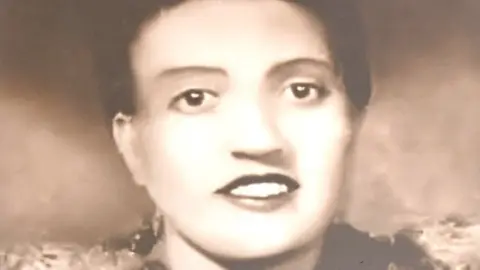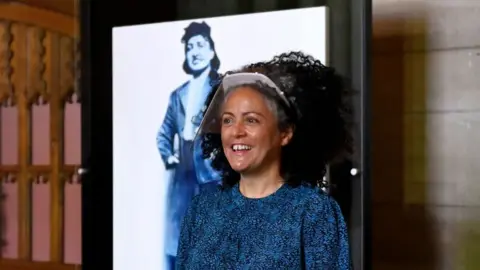Statue of Henrietta Lacks 'mother of medicine' ordered for Bristol campus
 Getty Images
Getty ImagesA statue of a black woman whose cells led to crucial medical advances will be displayed at the University of Bristol.
Henrietta Lacks died from cervical cancer in 1951 but a sample of her cells survived and multiplied.
The discovery led to the polio vaccine, gene mapping and IVF treatment among others and resulted in her being named the 'mother' of modern medicine.
Prof Jeremy Tavaré said the statue honoured the "invaluable contributions black people have made to science".
'Worldwide impact'
"Henrietta's cells are also currently being used in our own Covid-19 research," a spokesman for the university added.
Prof Tavare, the dean of the faculty of life sciences, said the unveiling of the statue on campus in October would coincide with the start of the university's work on "the decolonisation of our curriculum which will include an acknowledgement of the invaluable contributions black people have made to science over the years".
Jeri Lacks, Henrietta Lacks' granddaughter, said: "It is incredible to see our Hennie rightfully honoured for her worldwide impact."
The university said the statue, created by Helen Wilson-Roe, would be the first public sculpture of a black woman made by a black woman in the UK.
 University of Bristol
University of BristolThe sculptor said: "As a child growing up in Bristol there were no statues of Black women that I could identify with.
"So knowing that my children and their grandchildren and great grandchildren will be able to see Henrietta's statue in Bristol is just fantastic, especially at this time when Bristol is starting to address its past."
'HeLa cells'
It was during surgery that a sample of cells was taken from the tumour in Louisiana-born Ms Lacks' body before she died in Baltimore, aged 31.
It was sent to a laboratory where they were found to be the first living human cells ever to survive and multiply outside the human body.
These cells changed the course of modern medicine, making possible key medical advances including the development of the polio vaccine, chemotherapy, gene-mapping, IVF and cloning.
They became known as HeLa cells - taking the first two letters of Henrietta Lacks' first and last names. HeLa cells are used in almost every major hospital and science-based university in the world.
